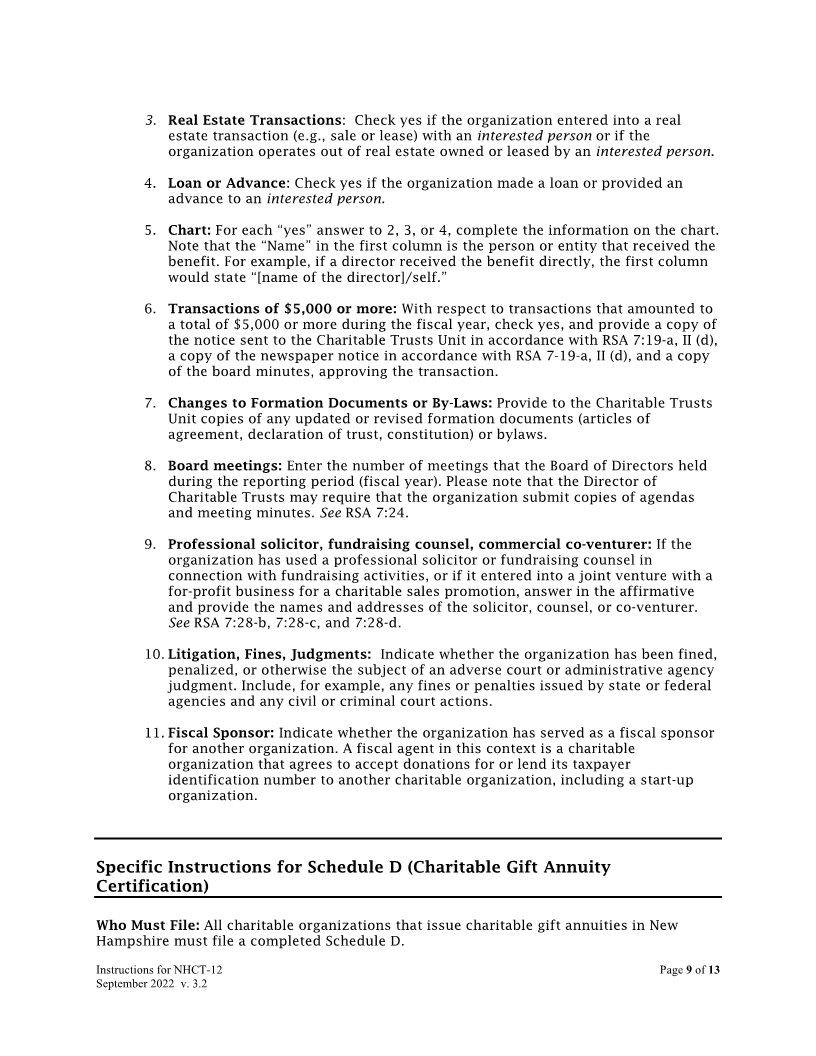
Enlarge image
OFFICE OF THE NEW HAMPSHIRE ATTORNEY GENERAL
CHARITABLE TRUSTS UNIT
One Granite Place South
Concord, NH 03301
ANNUAL REPORT
INSTRUCTIONS
1
General Requirements:
Filing New Hampshire- Out of State Express
Requirements Based Charitable Charitable Trusts/Private
Corporations or Corporations or Foundations
Associations Associations
Filing Fee $75 check payable to $75 check payable $75 check payable to State
State of New Hampshire to State of New of New Hampshire
Hampshire
Annual Report Form NHCT-12 signed under NHCT-12 signed NHCT-12 signed under
oath by president or under oath by oath by president,
treasurer president or treasurer, or trustee
treasurer
Financial Report Schedule A or Form 990 Schedule A or Form Form 990-PF
or 990-EZ (990-N is not 990 or 990-EZ (990-
acceptable) N is not acceptable)
Governing Board List Schedule B or a Schedule B or list of Schedule B or list of
document with Board members in trustees on Form 990-PF
equivalent information Form 990 or 990-EZ
Conflict of Schedule C N/A N/A
Interest/Governance
Report
Financial GAAP financial N/A Copy of accounting filed
Statements/Accountings statements if revenue is with probate court (if filing
between $500,000 and with probate court is
$2 ,000,000 required)
Audited GAAP financial
statements if revenue
exceeds $2,000,000
Additional Reports (if Schedule D (Charitable Schedule D Schedule E (Withdrawal due
applicable) Gift Annuity) (Charitable Gift to dissolution, merger,
Annuity) ceases operations in NH)
Schedule E (Withdrawal
due to dissolution, Schedule E
merger, ceases (Withdrawal due to
operations in NH) dissolution, merger,
1 Form NHCT-12 and Schedules A, B, C, D, and E may be downloaded from the All Forms web page:
https://www.doj.nh.gov/charitable-trusts/forms.htm.
Instructions for NHCT-12 Page 1of 13
September 2022 v. 3.2











